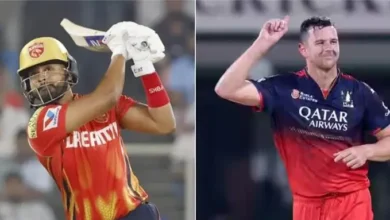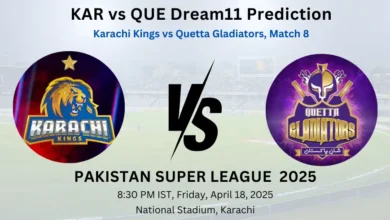Understanding No-Ball Guidelines in Cricket: Newest Updates (2025)

No-ball guidelines in cricket have advanced over time to make sure truthful play and participant security. Latest updates, particularly within the Indian Premier League (IPL) 2025, have introduced vital adjustments to how no-balls are adjudicated. This text delves into the present no-ball laws, highlighting key elements and up to date incidents that underscore their significance.
What Constitutes a No-Ball?
A no-ball is an unlawful supply by the bowler, resulting in penalties and restrictions on dismissals. Widespread causes for a no-ball embody:
- Entrance Foot Fault: The bowler’s entrance foot lands past the popping crease.
- Again Foot Fault: The bowler’s again foot touches or crosses the return crease.
- Excessive Full Toss (Beamer): A supply that reaches the batter above waist top with out bouncing.
- Overhead Bouncer: A brief-pitched supply that passes over the batter’s head.
- Double Bounce or Rolling Supply: The ball bounces greater than as soon as or rolls alongside the bottom earlier than reaching the batter.
- Fielding Restrictions: Violations such because the wicketkeeper standing in entrance of the stumps earlier than the ball passes the batter.
- Throwing: The bowler straightens the elbow throughout supply, constituting an unlawful motion.
Latest Updates in No-Ball Rules
1. DRS Growth to No-Balls and Wides
In IPL 2025, the Choice Assessment System (DRS) has been expanded to incorporate opinions for height-based no-balls and off-side wides. This permits groups to problem on-field choices relating to these particular deliveries, aiming for better accuracy and equity.
2. Second New Ball Rule
To counter the consequences of dew in evening matches, IPL 2025 launched a rule permitting the bowling staff to request a brand new ball after the tenth over of the second innings. This goals to take care of steadiness between bat and ball beneath difficult situations.
Learn Alos:- : Rahul Dravid Annoyed with Umpires
Influence of No-Ball Calls: Notable Incidents
Wicketkeeper’s Place Resulting in No-Ball
In a latest IPL 2025 match between Sunrisers Hyderabad and Mumbai Indians, a wicket taken by spinner Zeeshan Ansari was nullified as a result of wicketkeeper Heinrich Klaasen‘s gloves have been barely forward of the stumps on the time of supply. This breach resulted in a no-ball name, permitting the batter to proceed and contribute to the staff’s victory.
Again Foot No-Ball in Tremendous Over
Australian pacer Mitchell Starc was penalized for a back-foot no-ball throughout a Tremendous Over in an IPL 2025 match. His again foot touched the return crease, resulting in the supply being deemed unlawful.
NO BALL!
It is not for FRONT FOOT! It is BACK FOOT NO BALL!
STARC Cannot Imagine It!#MitchellStarc #NoBall #SuperOver #DCvsRR #ipl2025 #cricketaddiction pic.twitter.com/P6GfUqTbhz
— Cricket Habit (@CricketAdd1ct) April 16, 2025
Abstract Desk: Key No-Ball Guidelines
| State of affairs | Description |
|---|---|
| Entrance Foot Overstep | Bowler’s entrance foot lands past the popping crease. |
| Again Foot Fault | Bowler’s again foot touches or crosses the return crease. |
| Excessive Full Toss (Beamer) | Supply reaches batter above waist top with out bouncing. |
| Overhead Bouncer | Brief-pitched supply passes over the batter’s head. |
| Double Bounce or Rolling Supply | Ball bounces greater than as soon as or rolls alongside the bottom earlier than reaching batter. |
| Wicketkeeper’s Place Violation | Wicketkeeper stands in entrance of the stumps earlier than the ball passes the batter. |
| Throwing | Bowler straightens elbow throughout supply. |
Understanding the nuances of no-ball guidelines is essential for gamers, officers, and followers alike. Latest updates and incidents in IPL 2025 spotlight the significance of adhering to those laws to make sure truthful play and keep the integrity of the sport.




